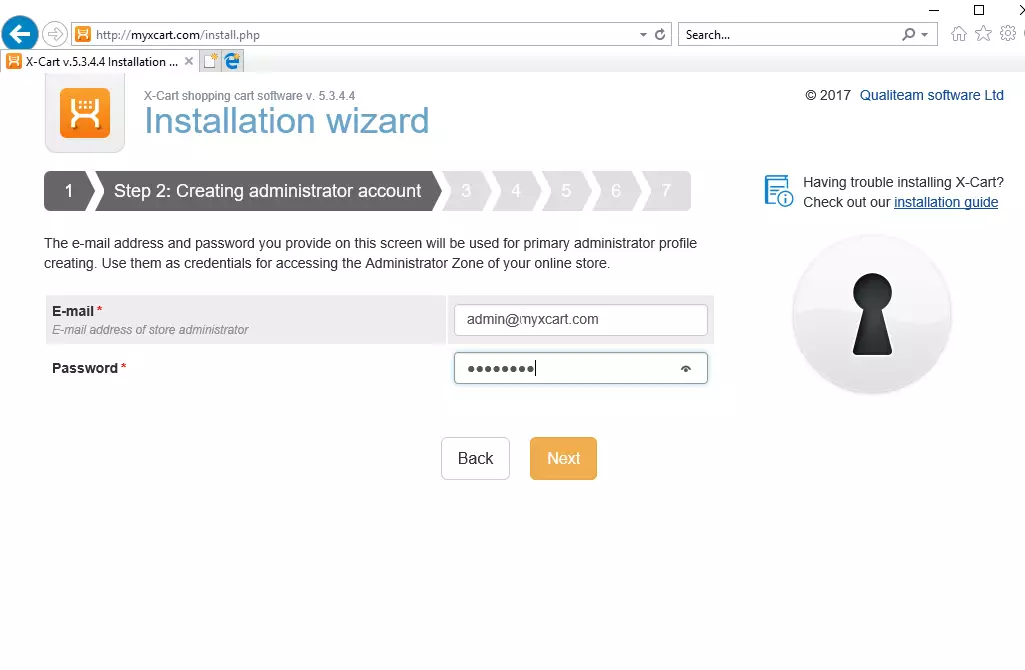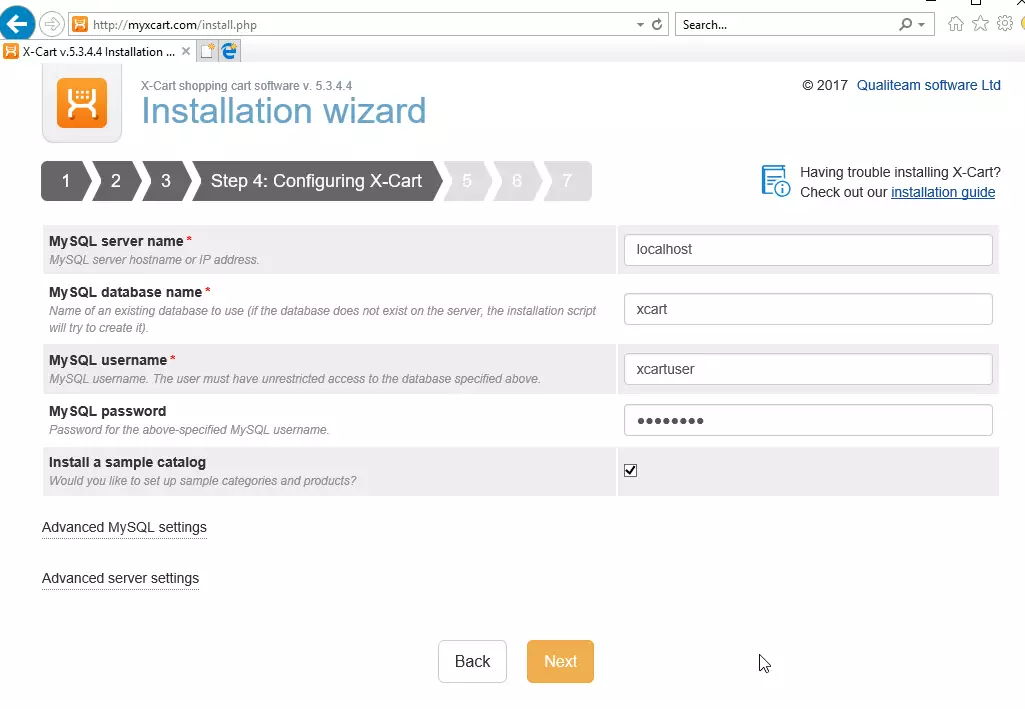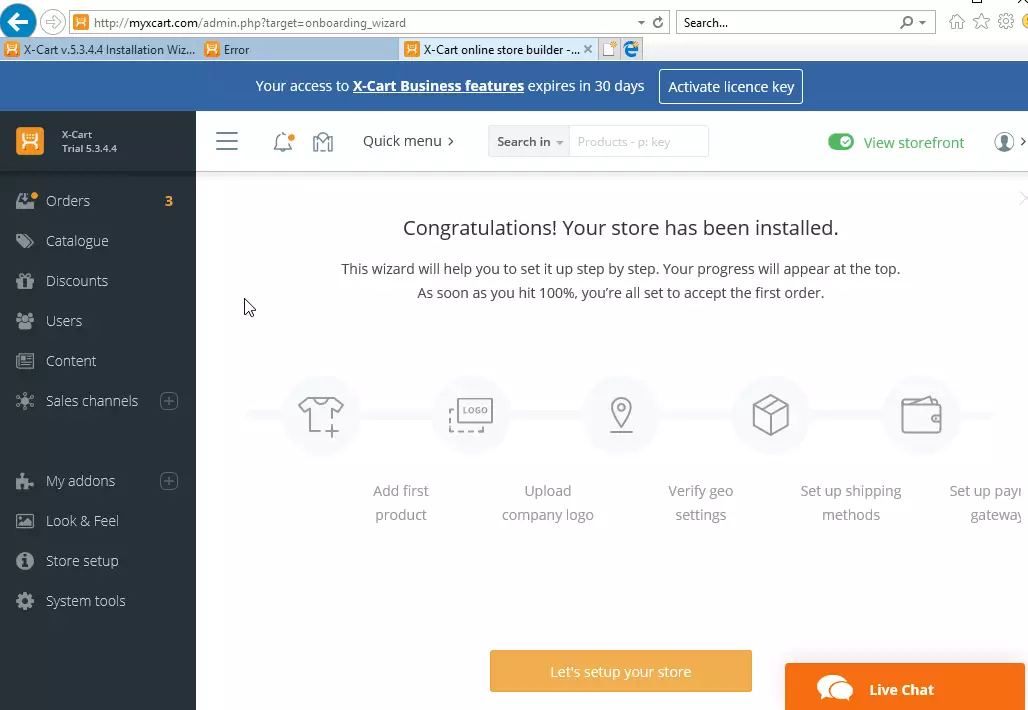This article explains installing X-Cart with Apache support on Ubuntu Linux.
Installing X-Cart on Ubuntu Linux is a great way to set up an online store easily. Ubuntu Linux is a popular operating system that is secure, stable, and easy to use. Additionally, X-Cart is written in PHP, which is a widely used programming language that is supported on Ubuntu Linux.
By installing X-Cart on Ubuntu Linux, you can take advantage of the many benefits of both software packages and set up a powerful and secure eCommerce platform in no time.
X-Cart is not free. However, you only pay a one-time licensing fee! No fees for transactions and no hefty monthly fees. If other eCommerce platforms are unsuitable for your environment, you may consider X-Cart.
To get started with installing X-Cart, follow the steps below:
Install Apache2
X-Cart requires a webserver to function; the most popular web server today is Apache2. So, go and install Apache2 on Ubuntu by running the commands below:
sudo apt-get install apache2
After installing Apache2, run the commands below to turn off the directory listing.
sudo sed -i "s/Options Indexes FollowSymLinks/Options FollowSymLinks/" /etc/apache2/apache2.conf
Next, run the commands below to stop, start, and enable the Apache2 service to always start up with the server boots.
sudo systemctl stop apache2.service sudo systemctl start apache2.service sudo systemctl enable apache2.service
Install MariaDB
X-Cart also requires a database server to function. And MariaDB database server is a great place to start. To install it, run the commands below.
sudo apt-get install mariadb-server mariadb-client
After installation, the commands below can stop, start, and enable the MariaDB service to start up when the server boots.
sudo systemctl stop mariadb.service sudo systemctl start mariadb.service sudo systemctl enable mariadb.service
After that, run the commands below to secure the MariaDB server.
sudomysql_secure_installation
When prompted, answer the questions below by following the guide.
- Enter current password for root (enter for none): Just press the Enter
- Set root password? [Y/n]: Y
- New password: Enter password
- Re-enter new password: Repeat password
- Remove anonymous users? [Y/n]: Y
- Disallow root login remotely? [Y/n]: Y
- Remove test database and access to it? [Y/n]: Y
- Reload privilege tables now? [Y/n]: Y
Restart MariaDB server
sudo systemctl restart mariadb.service
Install PHP and Related Modules
X-Cart also requires PHP to function. To install PHP and related modules, run the commands below.
sudo apt-get install php php-common php-mbstring php-xmlrpc php-soap php-gd php-xml php-intl php-mysql php-cli php-mcrypt php-ldap php-zip php-curl
After installing PHP, run the commands below to open the Apache2 PHP default file.
sudo nano /etc/php/7.1/apache2/php.ini # Ubuntu 17.10 sudo nano /etc/php/7.0/apache2/php.ini # Ubuntu 17.04
Then, change the following lines below in the file and save. You may increase the value to suit your environment.
max_execution_time = 180 max_input_time = 60 memory_limit = 256M upload_max_filesize = 64M
Create X-Cart Database
Now that you’ve installed all the required packages continue below to start configuring the servers. First, run the commands below to create an X-Cart database.
Run the commands below to log on to the database server. When prompted for a password, type the root password you created above.
sudo mysql -u root -p
Then, create a database called xcart
CREATE DATABASE xcart;
Create a database user called xcartuser with a new password
CREATE USER 'xcartuser'@'localhost' IDENTIFIED BY 'new_password_here';
Then, grant the user full access to the database.
GRANT ALL ON xcart.* TO 'xcartuser'@'localhost' IDENTIFIED BY 'user_password_here' WITH GRANT OPTION;
Finally, save your changes and exit.
FLUSH PRIVILEGES; EXIT;
Download X-Cart Latest Release
Next, visit the X-Cart site and register for a free account. You must enter your email address before you’re allowed to download a copy. The English edition is what you’ll want to download.
https://www.x-cart.com/download.html
After downloading, run the commands below to extract the download file into the Apache2 root directory.
unzip x-cart-5.3.3.4-gb.zip sudo mv x-cart /var/www/html/xcart
Change or modify the directory permission to fit the Apache2 configuration.
sudo chown -R www-data:www-data /var/www/html/xcart sudo chmod -R 755 /var/www/html/xcart
Configure Apache2
Finally, configure the Apahce2 site configuration file for X-Cart. This file will control how users access X-Cart content. Run the commands below to create a new configuration file called xcart.conf.
sudo nano /etc/apache2/sites-available/xcart.conf
Then copy and paste the content below into the file and save it. Replace the highlighted line with your domain name and directory root location.
<VirtualHost *:80>
ServerAdmin admin@example.com
DocumentRoot /var/www/html/xcart/
ServerName example.com
ServerAlias www.example.com
<Directory /var/www/html/xcart/>
Options Indexes FollowSymLinks MultiViews
AllowOverride All
Order allow,deny
allow from all
</Directory>
ErrorLog ${APACHE_LOG_DIR}/error.log
CustomLog ${APACHE_LOG_DIR}/access.log combined
</VirtualHost>
Save the file and exit.
Enable the X-Cart and Rewrite Module
After configuring the VirtualHost above, please enable it by running the commands below.
sudo a2ensite xcart.conf sudo a2enmod rewrite
Restart Apache2 by running the commands below to load all the settings above.
sudo systemctl restart apache2.service
Then open your browser and browse to the server domain name. Next, you should see the X-Cart setup wizard complete. Please follow the wizard carefully.
http://example.com/install

Type the database connection info and continue.

Wait a few seconds, and X-Cart should be installed.

Enjoy!

Congratulations! You’ve just successfully installed X-Cart on Ubuntu
You may also like the post below:

Leave a Reply Cancel reply